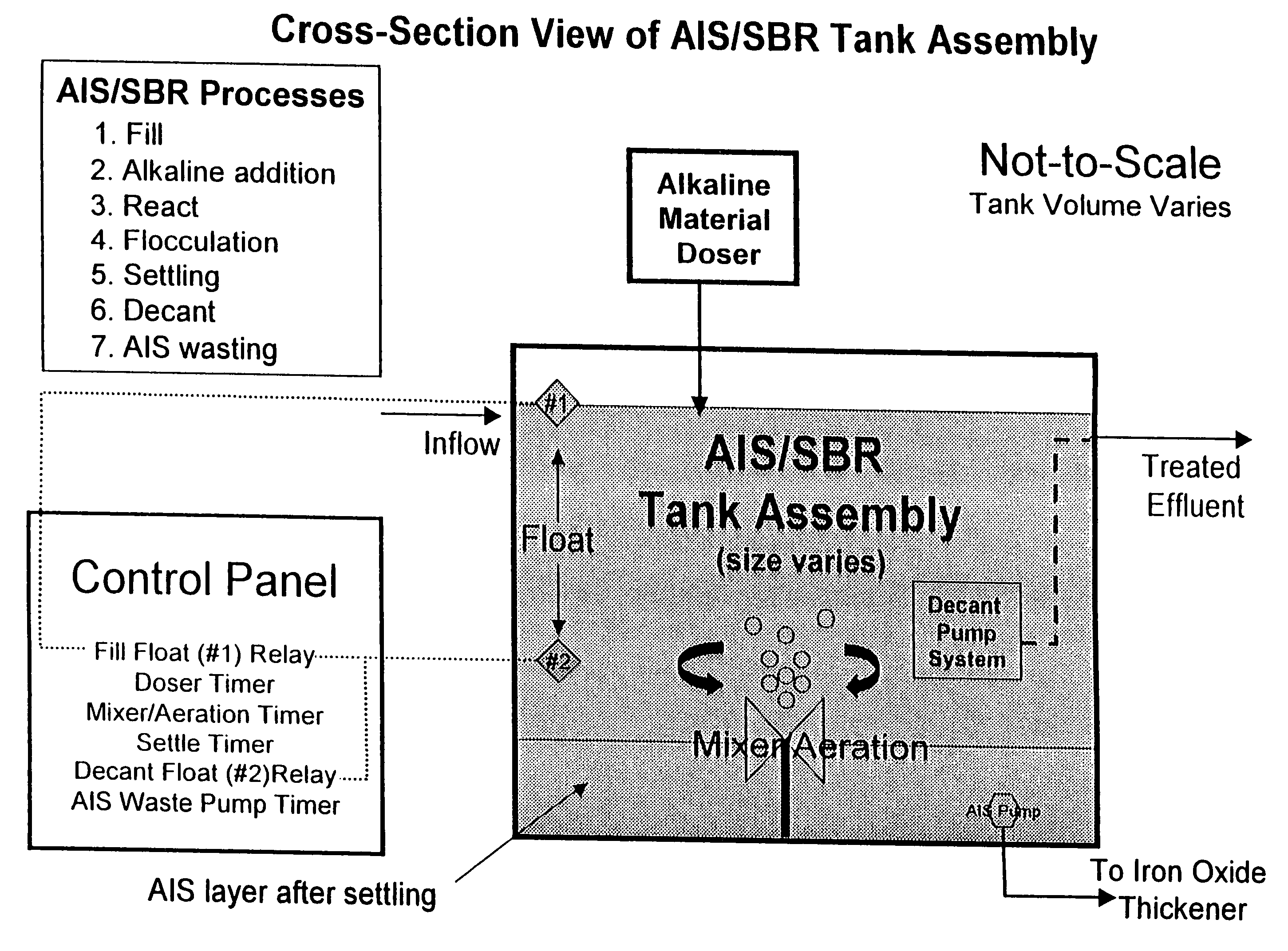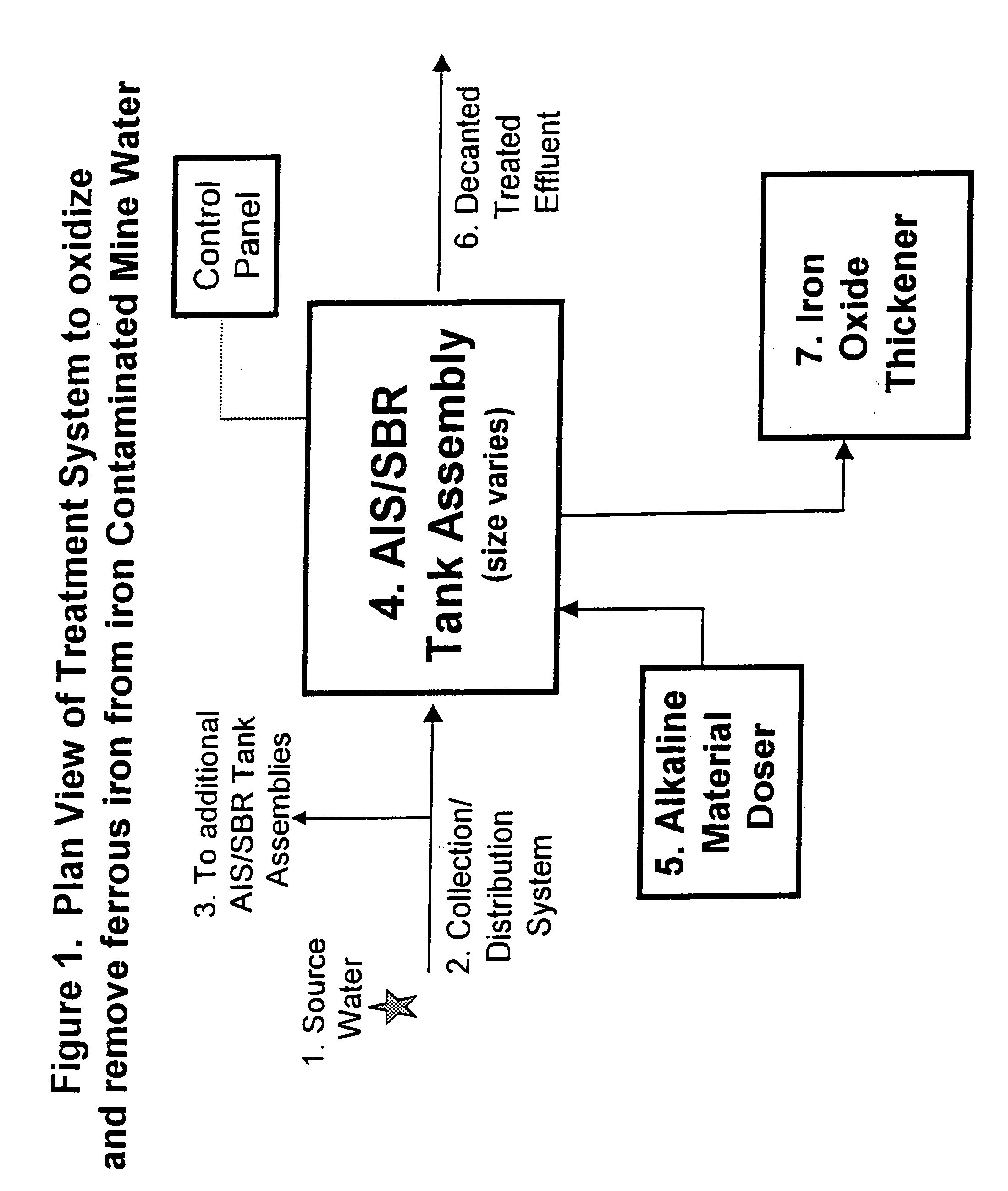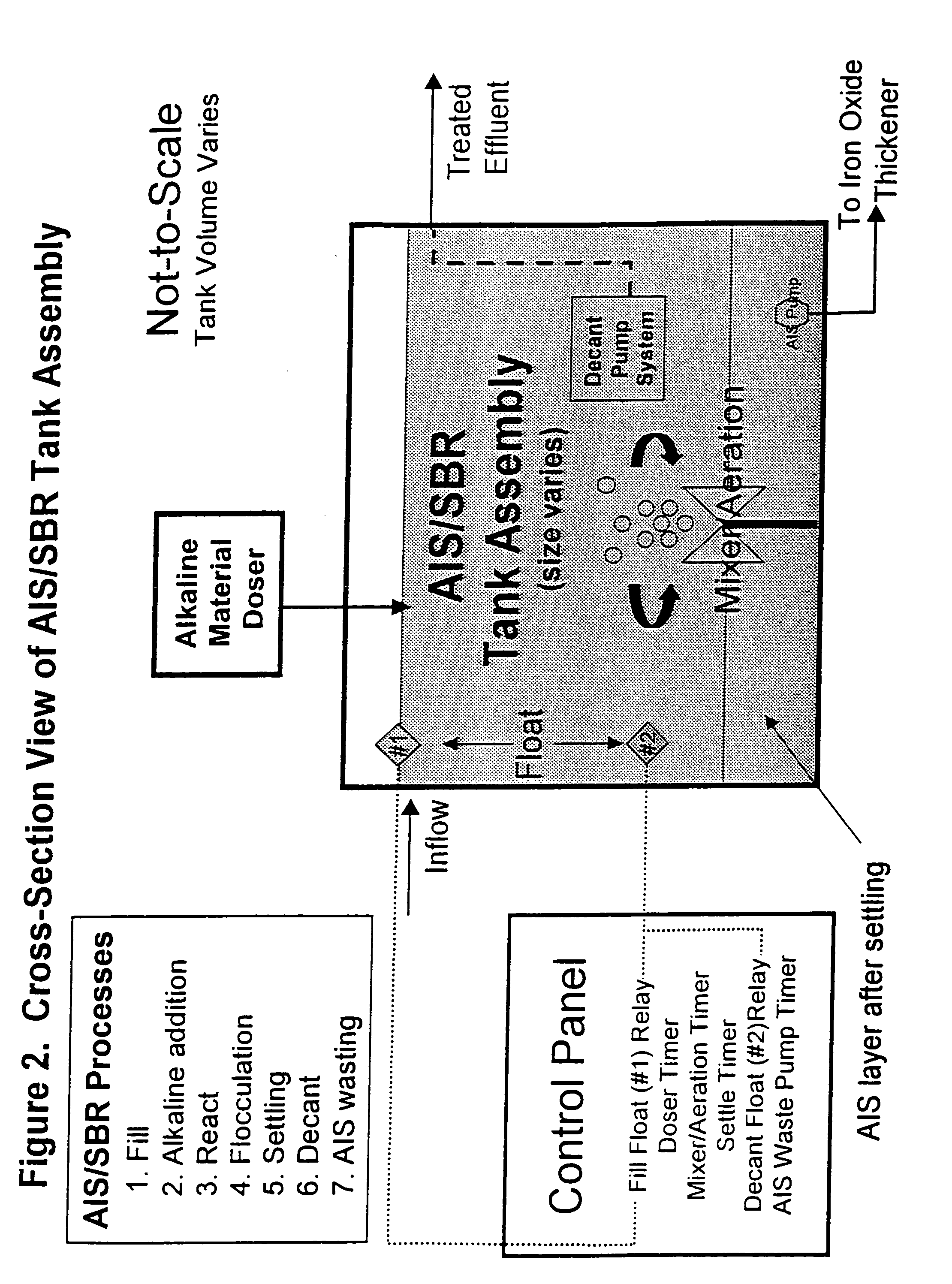Treatment of iron contaminated liquids with an activated iron solids (AIS) process
a technology of activated iron solids and liquid treatment, which is applied in the direction of biological water/sewage treatment, quarries, separation processes, etc., can solve the problems of high cost of mine drainage treatment, and impact on social, recreational and commercial use. , to achieve the effect of high ferrous oxidation reaction ra
- Summary
- Abstract
- Description
- Claims
- Application Information
AI Technical Summary
Benefits of technology
Problems solved by technology
Method used
Image
Examples
Embodiment Construction
[0020]FIG. 1 is a plan view of the treatment system. An iron-contaminated water source (1) is directed into a least one AIS container assembly (4) or more preferably a plurality of AIS container assemblies. The means of directing the iron-contaminated water into at least one AIS container assembly may be by gravitational force or by pumping the iron-contaminated liquid into the AIS container assembly. When a plurality of AIS container assemblies are used in the treatment of iron-contaminated water, a means for collecting and distributing the iron-contaminated water, such as a header system or distribution tank assembly, precedes the AIS / container assembly (3).
[0021] The source of iron-contaminated fluid is directed through a first conduit (2) that is engaged with the inlet of the AIS container assembly (4) or a plurality of AIS container assemblies. Each AIS container assembly in a plurality of AIS container assemblies is identical as shown in FIGS. 2a and 2b, a cross-section view ...
PUM
| Property | Measurement | Unit |
|---|---|---|
| Time | aaaaa | aaaaa |
| Flow rate | aaaaa | aaaaa |
| Concentration | aaaaa | aaaaa |
Abstract
Description
Claims
Application Information
 Login to View More
Login to View More - R&D
- Intellectual Property
- Life Sciences
- Materials
- Tech Scout
- Unparalleled Data Quality
- Higher Quality Content
- 60% Fewer Hallucinations
Browse by: Latest US Patents, China's latest patents, Technical Efficacy Thesaurus, Application Domain, Technology Topic, Popular Technical Reports.
© 2025 PatSnap. All rights reserved.Legal|Privacy policy|Modern Slavery Act Transparency Statement|Sitemap|About US| Contact US: help@patsnap.com



